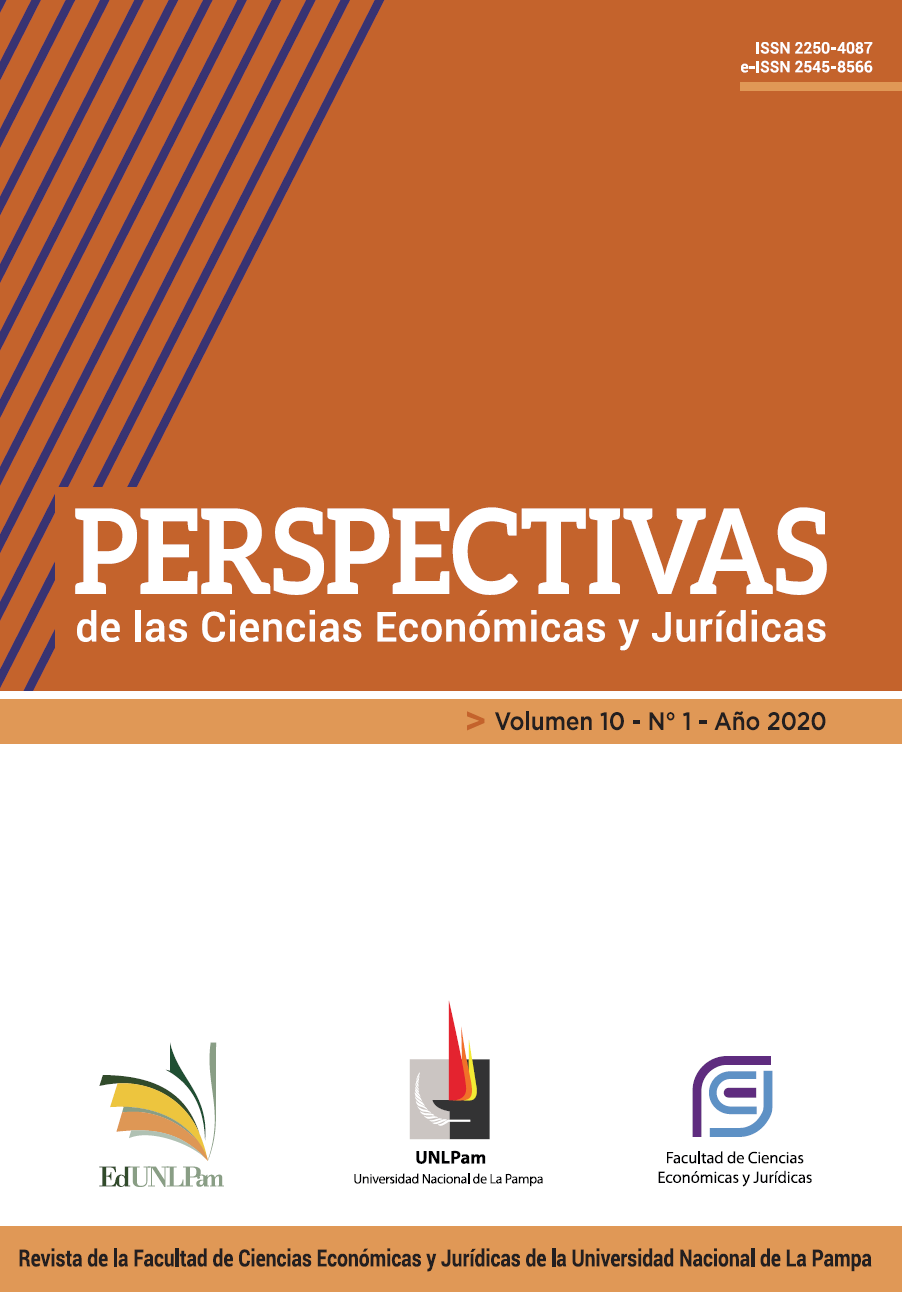COMISSÃO DE ELIMINAÇÃO DA DISCRIMINAÇÃO CONTRA AS MULHERES: MECANISMOS E DESAFIOS
DOI:
https://doi.org/10.19137/perspectivas-2020-v10n1a01Palavras-chave:
Direitos humanos, Gênero, Convenção sobre a Eliminação de Todas as Formas de Discriminação contra as Mulheres, Comitê para a Eliminação da Discriminação contra as MulheresResumo
Os direitos humanos progrediram do geral para o particular. Nesse contexto, são consagrados os direitos das mulheres, cujo principal instrumento é a Convenção sobre a Eliminação de Todas as Formas de Discriminação contra as Mulheres, que condena as diferentes formas de discriminação e persegue o objetivo fundamental da igualdade entre homens e mulheres; seu órgão de execução e controle, o Comitê, emprega uma série de mecanismos e deve enfrentar uma variedade de desafios para avançar na aplicação real dos direitos e princípios da Convenção.
Downloads
Referências
- AGNU – Asamblea General de las Naciones Unidas, 1999a. Estudio Mundial sobre el papel de la mujer en el desarrollo: Mundialización, género y trabajo, 54º período de sesiones, A/54/227 [en línea]. Ginebra: Oficina del Alto Comisionado para los Derechos Humanos. Disponible en: http://www.unhchr.ch/Huridocda/Huridoca.nsf/0/9997922f6d0cdca180256840 00524ad4?OpenDocument (Acceso 1 mayo 2019).
- BINSTOCK, H. (1998) Towards Equality for Women, progress in legislation since the adoption of the Convention on the Elimination of All Forms of Discrimination against Women. Disponible en: Disponible en: http://repositori.uji.es/xmlui/bitstream/handle/10234/22429/32023.pdf?sequence=1 (Acceso: 11 de mayo de 2019) - COOK, R.J. y CUSACK, S. (2009) Estereotipos de género. Perspectivas legales transnacionales. Disponible en: https://www.law.utoronto.ca/documents/reprohealth/SP26-Estereotipos-Libro.pdf. (Acceso 1 mayo 2019).
- COMINS MINGOL, I. (2008) Los Derechos Humanos y la Eliminación de la Violencia contra la Mujer. Disponible en: http://repositori.uji.es/xmlui/bitstream/handle/10234/22429/32023.pdf?sequence=1 (Acceso: 10 de mayo de 2019)
- Comité CEDAW, (2012). Access to Justice – Concept Note for Half Day General Discussion. Endorsed by the Committee on the Elimination of Discrimination against Women at its 53rd Session [en línea]. Disponible en: http://www2.ohchr.org/english/bodies/cedaw/docs/Discussion2013/ConceptN oteAccessToJustice.pdf (Acceso 6 mayo 2019).
- DIEZ DE VELASCO, M. (2007). Instituciones de Derecho Internacional Público. Madrid: Tecnos.
- DIEZ DE VELASCO, M. (2008). Las Organizaciones Internacionales. Madrid: Tecnos.
- Directrices sobre la independencia y la imparcialidad de los miembros de los órganos creados en virtud de tratados de derechos humanos (“Directrices de Addis Abeba”)
- DOLGOPOL, U (2016): “The Construction of Knowledge about Women, War and Access to Justice” en DALE STEPHENS, P. B. (2016) Essays in Conversation with Judith Gardam. Disponible en: https://www.jstor.org/stable/10.20851/j.ctt1sq5x0z.10. (Acceso 2 mayo 2019).
- ENGLE MERY, S. (2003) Constructing a Global Law-Violence against Women and the Human Rights System. Disponible en:https://www.jstor.org/stable/1215792 (Acceso: 15 de mayo de 2019).
-ERTUK, Y. (2004). Considering the Rol oh Men in Agenda Setting: Conceptural and Policy Issues.Disponible en: https://www.researchgate.net/publication/32036472_Considering_the_role_of_men_in_gender_agenda_setting_Conceptual_and_policy_issues (Acceso 3 de mayo de 2019).
- FERNÁNDEZ RODRÍGUEZ DE LIÉVANA, G. (2015). Los Estereotipos de Género en los Procedimientos Judiciales por Violencia de Género: El Papel del Comité CEDAW en la Eliminación de la Discriminación y de la Estereotipación. Disponible en: http://ssrn.com/abstract=2611539 (Acceso: 6 de mayo de 2019)
- FREDMAN, S. (2003). Beyond the Dichotomy of Formal and Substantive Equality: Towards a New Definition of Equal Rights. En: I. Boerefijn, et al., eds. Temporary Special Measures: Accelerating de facto Equality of Women under Article 4(1) UN Convention on the Elimination of All Forms of Discrimination against Women. Antwerp, Oxford, New York: Intersentia, 111-115.
- GRENFELL, L. (2016) “Women’s Role in Reconstituting the Post-Conflict State Imagining Law” en: DALE STEPHENS, P B (Ed) Essays in Conversation with Judith Gardam. Disponible en: https://www.jstor.org/stable/10.20851/j.ctt1sq5x0z.14 (Acceso: 13 de mayo de 2019)
- JIMÉNEZ DE ARÉCHAGA, E. y otros (2005) Curso de Derecho Internacional Público, TI, 2°, Montevideo: Ed. Montenvideo.
- KOZMA SOURCE, T. (2012) Understanding Gender Mainstreaming in Modern Law Enforcement. Disponible en: https://www.jstor.org/stable/10.2307/26326277 (Acceso: 17 de mayo de 2019).
- Naciones Unidas (1995) Declaración y Plataforma de Acción de Beijing. Declaración política y documentos resultados de Beijing+5.
- Naciones Unidas (2009). Compilación de Directrices Relativas a la Forma y el Contenido de los Informes que deben presentar los Estados Partes en los Tratados Internacionales de Derechos Humanos
- Naciones Unidas (2015) Manual para los miembros de los órganos creados en virtud de tratados de derechos humanos.
-Oficina del alto comisionado de derecho humanos de naciones unidas: https://www.ohchr.org/sp/hrbodies/cedaw/pages/cedawindex.aspx
- PAGLIARI, A. S. (2013). Curso de Derecho Internacional Público. Córdoba: Advocatus.
- Reglamento del comité para la eliminación de la discriminación contra la mujer.
- SALAS, G.R. (2002) Temas de Derecho Internacional público. Nociones históricas. Córdoba: Advocatus.
- ZAPATA, D. (2007). Indicadores para el cumplimiento de la Convención sobre la eliminación de todas las formas de discriminación contra la mujer. Santiago de Chile: Naciones Unidas CEPAL. Unidad Mujer y Desarrollo.
Downloads
Publicado
Edição
Seção
Licença
Aquellos autores/as que tengan publicaciones con esta revista, aceptan los términos siguientes:- Los autores/as conservarán sus derechos de autor y garantizarán a la revista el derecho de primera publicación de su obra, el cuál estará simultáneamente sujeto a la Licencia de reconocimiento de Creative Commons que permite a terceros compartir la obra siempre que se indique su autor y su primera publicación esta revista.
- Los autores/as podrán adoptar otros acuerdos de licencia no exclusiva de distribución de la versión de la obra publicada (p. ej.: depositarla en un archivo telemático institucional o publicarla en un volumen monográfico) siempre que se indique la publicación inicial en esta revista.
- Se permite y recomienda a los autores/as difundir su obra a través de Internet (p. ej.: en archivos telemáticos institucionales o en su página web) antes y durante el proceso de envío, lo cual puede producir intercambios interesantes y aumentar las citas de la obra publicada. (Véase El efecto del acceso abierto).











.png)



5.jpg)












